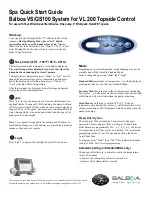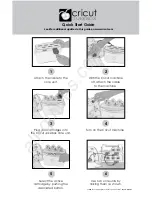
57
Refrigeration Maintenance
NOTE: The following procedures involve servicing the refrigeration system. Some of these service procedures are regu-
lated by Federal, and in some cases, by State and Local laws.
All regulated refrigeration service procedures must be performed by an EPA certified technician, using approved equip-
ment and complying with all Federal, State and Local laws.
REFRIGERANT CHARGE
Testing the Refrigerant Charge with an Empty
Trailer
If the unit has an insufficient charge of refrigerant, the evap-
orator will be “starved” and the box temperatures will rise
even though the unit is operating. The suction pressure will
drop as the refrigerant charge decreases. If the unit has an
overcharge of refrigerant, the unit may not cool properly
and the suction and discharge pressure may be high. The
charge may be determined by inspection of the refrigerant
through the receiver tank sight glasses with the following
conditions established:
1.
Place a test box over the evaporator.
2.
Install a gauge manifold
3.
Use the Service Test Mode to run the unit in high speed
cool. Refer to the appropriate Operation and Diagnosis
Manual for specific information about the Service Test
Mode.
4.
Use the microprocessor thermometer to monitor the
return air temperature.
5.
Run the unit on high speed cool until the air in the box is
at 0 F (-18 C). By allowing the box to leak a small
amount, you will be able to maintain 0 F (-18 C).
6.
The suction pressure should be 13 to 18 psi (90 to
124 kPa).
7.
The discharge pressure should be at least 275 psi
(1896 kPa).
If the pressure is below this, it can be raised by cover-
ing a portion of the condenser grille with a piece of
cardboard to block condenser airflow.
8.
Under these conditions, the ball should be floating in
the receiver tank sight glass.
Testing the Refrigerant Charge with a Loaded
Trailer
1.
Install a gauge manifold.
2.
Use the Service Test Mode to run the unit in high speed
cool. Refer to the appropriate Operation and Diagnosis
Manual for specific information about the Service Test
Mode.
3.
Build up and maintain 275 psi (1896 kPa) of head pres-
sure. If the pressure is below this, it can be raised by
covering the roadside condenser grille with a piece of
cardboard to block condenser air flow.
4.
Cool the compartment to the lowest temperature
required.
5.
Check suction pressure. It should be 13 to 25 psi (90 to
165 kPa).
6.
Under these conditions, the ball should be floating in
the receiver tank sight glass.
Testing for an Overcharge
Use the following procedure to identify a Thermo King unit
with an excessive refrigerant charge:
1.
Install a calibrated gauge manifold on the compressor.
Содержание SB-III 30 SR+
Страница 4: ......
Страница 8: ......
Страница 10: ...ii ...
Страница 14: ...4 ...
Страница 24: ...Unit Description Rev 04 02 14 Unit Photos Front View AGA231 ...
Страница 25: ...Unit Description Rev 04 02 15 1 Defrost Damper 2 X430 Compressor 3 TK 486 Engine Back View AEA698 2 3 1 ...
Страница 28: ...18 ...
Страница 66: ...56 ...
Страница 98: ...88 ...
Страница 110: ...100 ...
Страница 111: ...101 Early Model Coiled Wire Fuse Link Wiring Schematic ...
Страница 112: ...102 Early Model Coiled Wire Fuse Link Wiring Diagram Page 1 of 4 ...
Страница 113: ...103 Early Model Coiled Wire Fuse Link Wiring Diagram Page 2 of 4 ...
Страница 114: ...104 Early Model Coiled Wire Fuse Link Wiring Diagram Page 3 of 4 ...
Страница 115: ...105 Early Model Coiled Wire Fuse Link Wiring Diagram Page 4 of 4 ...
Страница 116: ...106 Late Model Fuse Link in Battery Cable Wiring Schematic ...
Страница 117: ...107 Late Model Fuse Link in Battery Cable Wiring Diagram Page 1 of 4 ...
Страница 118: ...108 Late Model Fuse Link in Battery Cable Wiring Diagram Page 2 of 4 ...
Страница 119: ...109 Late Model Fuse Link in Battery Cable Wiring Diagram Page 3 of 4 ...
Страница 120: ...110 Late Model Fuse Link in Battery Cable Wiring Diagram Page 4 of 4 ...
















































